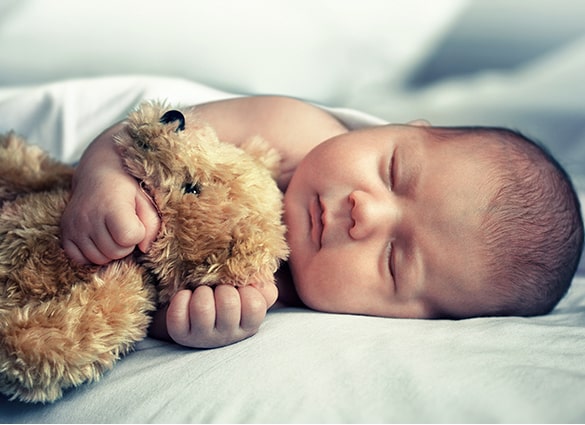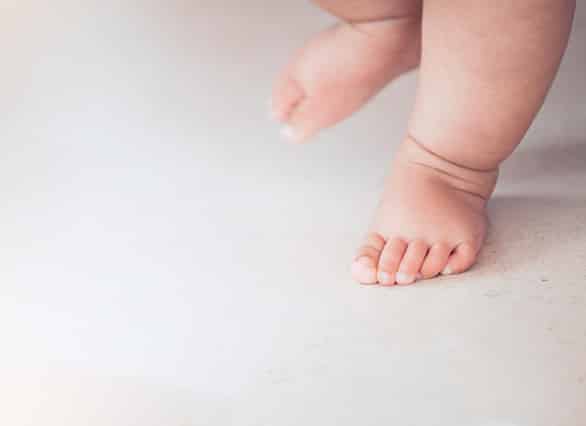
Present at birth
Congenital Curly Toe is a condition present at birth that causes visible curling of one or more toes, under or over an adjacent toe. It commonly affects the small toes on one or both feet. In infants, the condition causes no pain or discomfort with most parents primarily concerned about the appearance of the toes and the risk of long-term effects.
What causes Congenital Curly Toe?
It is unclear what causes a Congenital Curly Toe deformity in babies. It is thought that the flexor tendons that attach underneath the toe and help to keep the toe straight, are overly tight. In some cases, congenital curly toes seems to run in the family with other relatives affected. Children with overly flexible joints (or joint hypermobility) may also be affected.


How is it diagnosed?
Your Podiatrist will take a medical history and complete a physical examination. The assessment is likely to include:
- Foot posture assessment
- Joint flexibility tests (or range of motion)
- Assessment of sock fit and the fit of baby jump suits with enclosed toes
How is Congenital Curly Toe treated?
Current literature reports that there is spontaneous improvement, without treatment, in 25% of affected babies. When considering whether to simply monitor the toe deformity over time or to instigate treatment early, it is important to remember that a baby’s foot is very different to the adult foot. The foot bones in an infant are mostly cartilagenous making them soft, flexible and malleable. This provides a small window of opportunity for corrective splinting or taping to be effective in improving toe alignment.
If treatment is indicated it may include:
- Corrective toe splinting and taping techniques – used over many months to realign the toe into a corrected position
- Gentle mobilisation and stretching exercises done by the parents at each nappy change
- Avoid jumpsuits with enclosed feet that can reinforce the deformity
In the older child, toe splinting can help to support the toe in a corrected position. Curly toe splints are usually made from silicone that is custom-moulded to the toe and designed to be worn whenever wearing shoes. A separate night splint may also be helpful.
If the toe deformity is severe or progressively worsening, causing pain or making shoe fit difficult, corrective orthopaedic surgery may be considered.


What should I do if my baby has a Congenital Curly Toe?
If your baby has a Congenital Curly Toe deformity and you would like to learn more about possible treatment options, don’t hesitate to consult with our experienced paediatric podiatrists.

